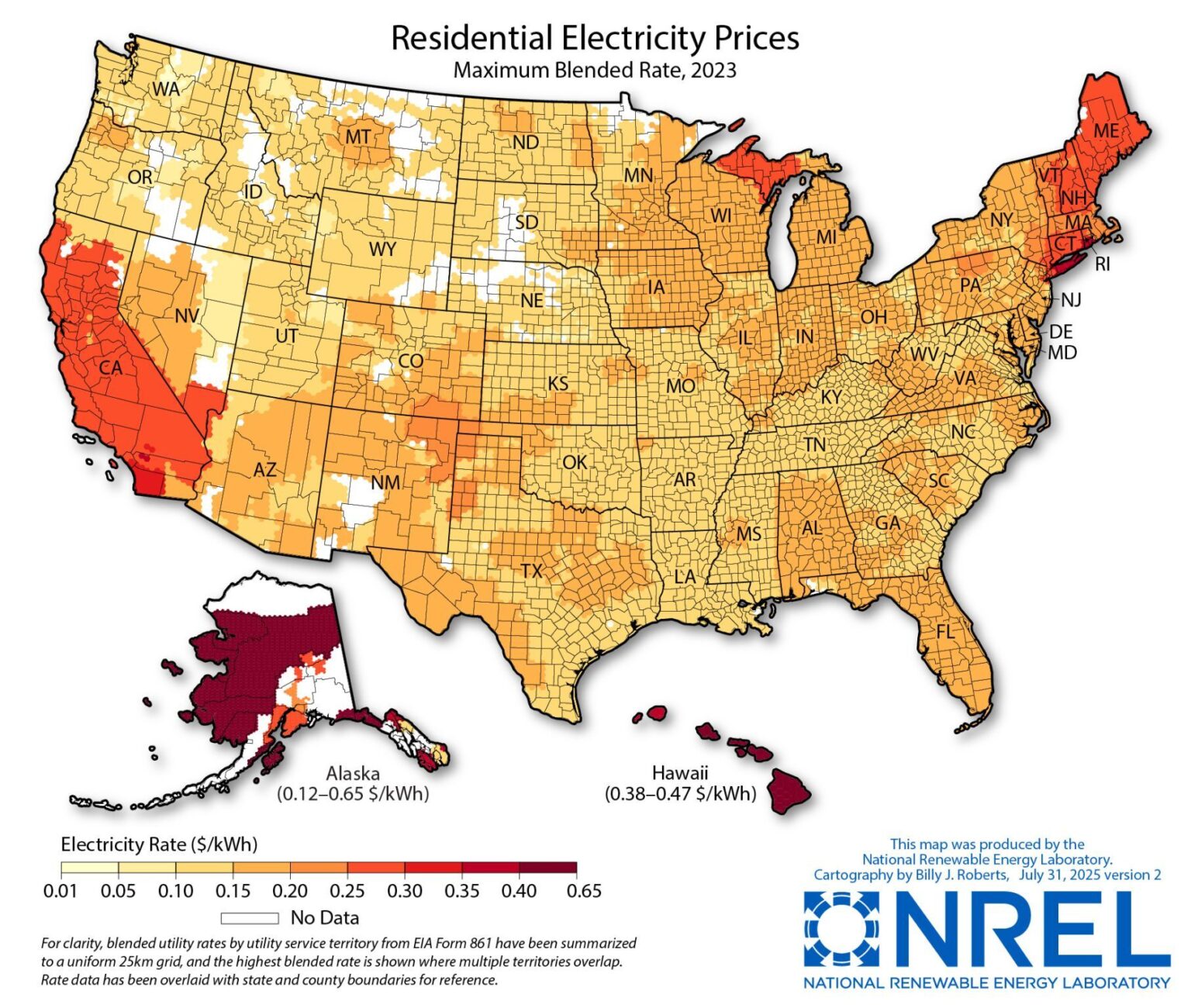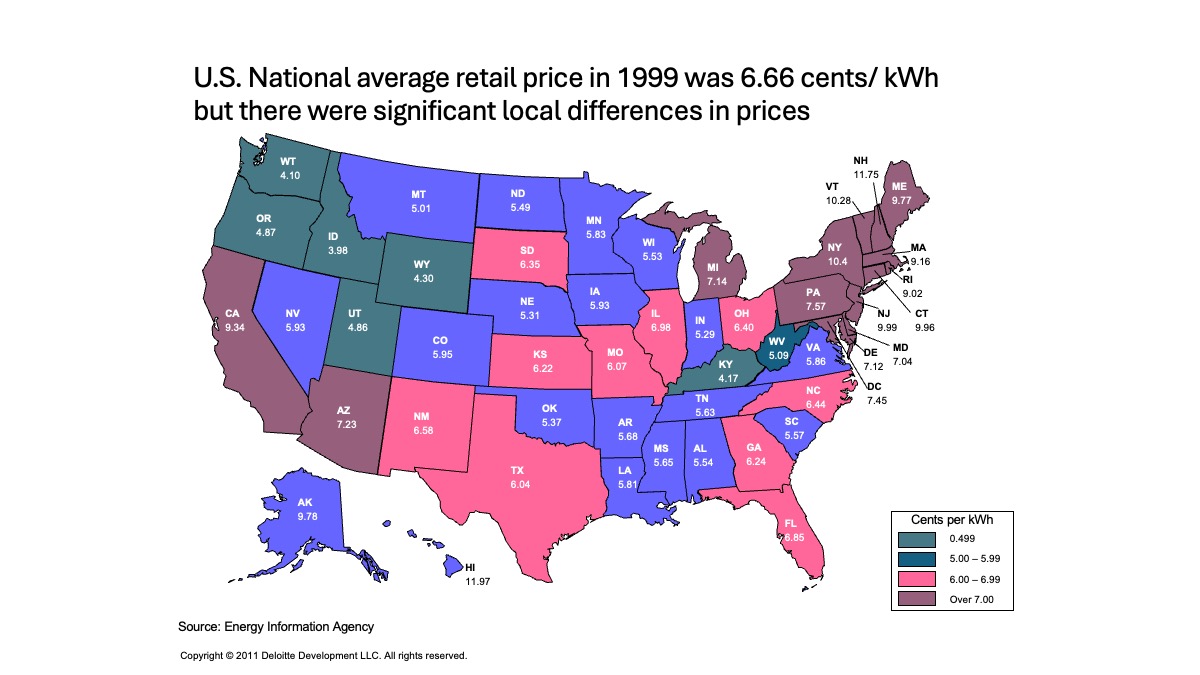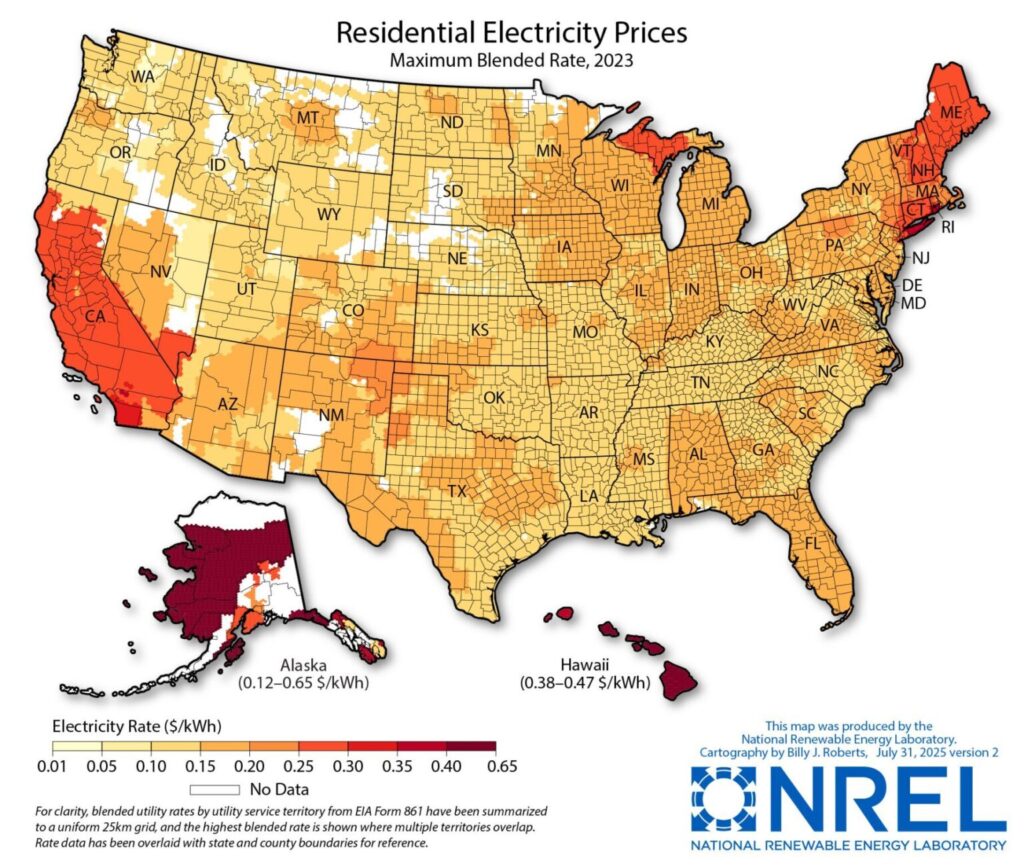A Comparison of Prices is Just That
By Branko Terzic
The National Renewable Energy Laboratory ( NREL) released a series of maps showing retail electricity rates by state with data from 2023. This map shows the residential electric rates. Can one draw any conclusions from these maps?

Yes, the main one being which states had higher electricity rates in 2023, and which states had lower rates. A comparison of commercial and industrial rates versus retail residential rates could lead, after further inquiry, to opinions as to whether states “subsidize” one customer class against others.
The additional inquiry would be into the state regulators required cost of service methodology and allocation of costs among customer classes. Without going into details accept my assertion that some COS methods allocate more costs to residential class and others to industrial. This would be true when states use a COS which minimizes the recognition of peak responsibility as an allocation guide. For a discussion of that issue see either Alfred Kahn’s “The Economics of Regulation” or James Bonbright’s “Principles of Public Utility Rates”. I do understand there are rates practitioners and economists with different views.

My quick review of this chart reminds me that states which had high rates, relative to US average, in 2023 were states which were in the same position in the 1990’s.
This makes some sense in that costs for an electric utility are affected by local geographic, geological, labor, work rules, cost of living and other physical and economic factors. Higher prices for electricity delivery could also reflect newer construction and lower depreciation reserve in rate base. Also, some states have high construction, material and labor costs for all infrastructure construction not just utilities.
At Yankee Gas, I was introduced to an employee who was a micro-explosives expert. He had pencil size charges which would be used to split boulders uncovered when trenching gas pipe. The alternative was an expensive, noisy and air particle producing rock saw. As I remember the micro explosive could not be used in some communities due to municipal ordinance. In the Midwest it was not unusual to plow flexible gas pipe under the deep loom. Hence significant cost differentials for trenching between the two geographies.
As an appraiser in the city of New York decades ago, I was advised that some utility work could only be done at night, also raising costs. Also, crew sizes varied due to traffic conditions.
In sum charts of costs are useful for some purposes: to determine the location of a refrigerated warehouse, but not for other purposes: identifying well managed or well-regulated electric utilities.
Finally, check out an older chart to see whether restructuring has changed relative positions.
The Honorable Branko Terzic is a former Commissioner on the U.S. Federal Energy Regulatory Commission and State of Wisconsin Public Service Commission, in addition he served as Chairman of the United Nations Economic Commission for Europe ( UNECE) Ad Hoc Group of Experts on Cleaner Electricity. He hold a BS Engineering and honorary Doctor of Sciences in Engineering (h.c.) both from the University of Wisconsin- Milwaukee.
#BrankoTerzic #energy #regulations #experience #research #future #opportunity #strategy #management #people #electricity #power #utilities #renewables #RenewableEnergy #energysector #powergeneration #energyindustry #sustainability #public #utility #gas

